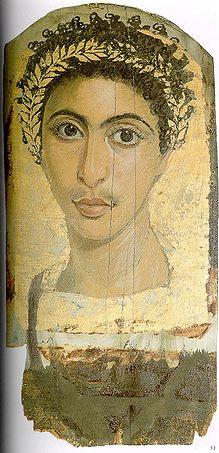Fayyum Portraits

This image is an example of Fayyum portraiture. During the Ptolemaic period the Fayyum was a place for resettled Macedonians, thus it was an area of cultural mixtures (the population there was mostly mixed Egyptian-Greek). This is reflected in the Fayyum (mummy) portraiture itself, as the Egyptian mummification process was combined with Greek (and Egyptian) tomb decorations. Though many Fayyum portraits were on wood panels, others were on cartonage, therefore combining a Greco-Roman painting style with an Egyptian material. While the hairstyle, jewelry, and clothing depicted in the paintings were Roman, the names were written in Greek and Egyptian. Thus, though many people site Fayyum portraits as an example of the Romanization of Egyptian burial practices, the presence of Greek and Egyptian elements indications a syncretism of practices.
People with Fayyum portraits were likely a small elite.
-cbahamon
Posted at Dec 13/2010 06:48PM:
cbahamon: Date: roughly late 1st cent. BC/early 1st cent AD - mid-3rd cent cent AD
